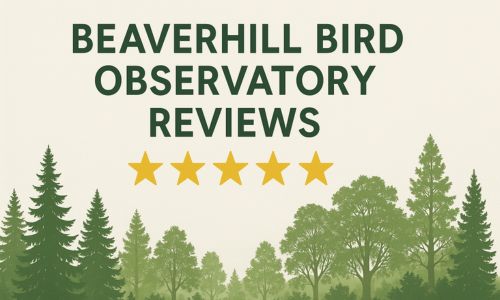Birding Hotspots in New Mexico: 10 Best Hotspots
Bosque del Apache National Wildlife Refuge, Rio Grande Nature Center State Park, Sandia Crest, Carlsbad Caverns National Park, Elephant Butte Lake State Park are the top birding hotspots in New Mexico.
Table of Contents
Why Find Birds in New Mexico?
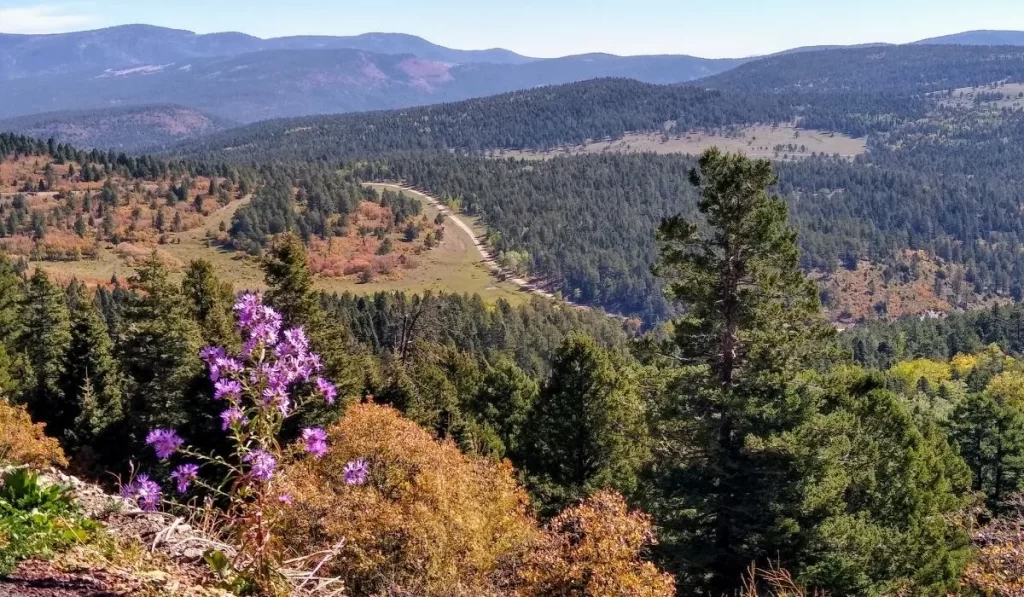
New Mexico, with its diverse landscapes ranging from arid deserts to lush forests, is a paradise for birdwatchers.
Home to over 500 bird species, this southwestern state offers a variety of habitats that attract both migratory and resident birds.
Whether you’re a seasoned birder or a curious beginner, New Mexico’s birding hotspots provide exceptional opportunities to observe a wide array of avian life.
This comprehensive guide will take you through some of the most renowned birding locations in New Mexico, highlighting the unique features and species you can expect to encounter at each site.
Here we listed 10 best birding hotspots in New Mexico:
1. Bosque del Apache National Wildlife Refuge
Overview
Bosque del Apache National Wildlife Refuge, located near Socorro, is one of the most famous birding sites in North America. The refuge spans over 57,000 acres of wetlands, grasslands, and desert terrain, providing a rich mosaic of habitats for birds.
Key Species
- Sandhill Cranes: Thousands of Sandhill Cranes migrate to the refuge each winter, offering a spectacular sight during dawn and dusk.
- Snow Geese: Large flocks of Snow Geese create mesmerizing aerial displays.
- Bald Eagles: Winter months provide a good chance to see Bald Eagles.
- Various Waterfowl: The wetlands attract a wide variety of ducks, herons, and other waterfowl.
Best Time to Visit
The peak birding season is from late November to early February when the migratory birds are most abundant. However, the refuge offers excellent birding opportunities year-round.
Tips for Birders
- Dawn and Dusk Visits: For the best views of Sandhill Cranes and Snow Geese, visit during sunrise or sunset.
- Auto Tour Loop: Drive the 12-mile loop for diverse birding experiences without leaving your car.
- Observation Decks: Use the designated observation decks for optimal bird watching and photography.
2. Rio Grande Nature Center State Park
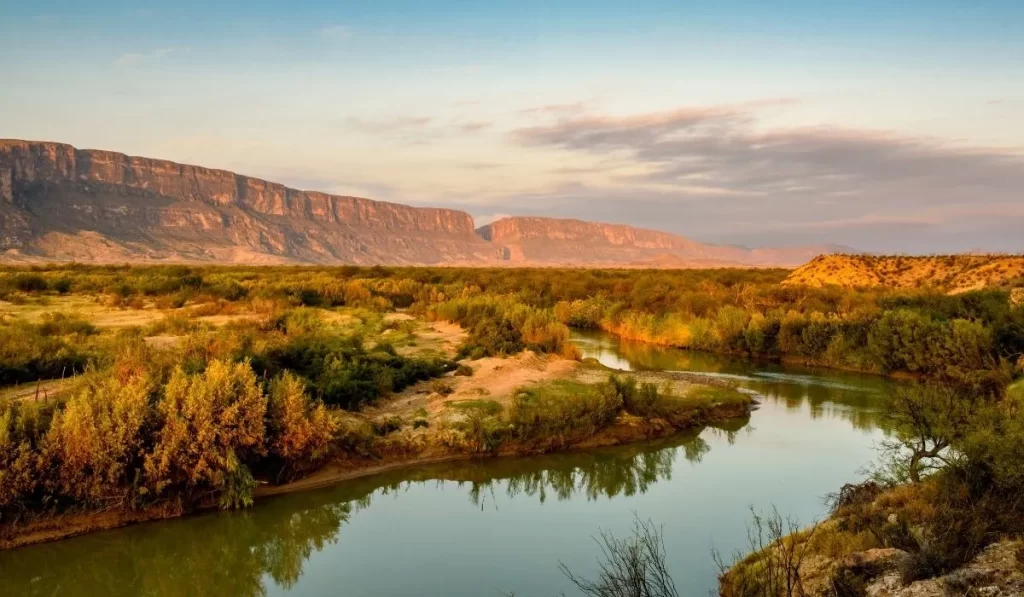
Overview
Situated in Albuquerque, the Rio Grande Nature Center State Park offers an urban oasis for birding enthusiasts. The park encompasses 270 acres of woodlands, meadows, and wetlands along the Rio Grande.
Key Species
- Wood Ducks: The park is a reliable spot to see Wood Ducks.
- Cooper’s Hawks: Often seen hunting in the park.
- American Kestrels: Frequently spotted hovering over open areas.
- Varied Songbirds: Warblers, sparrows, and other songbirds are abundant, especially during migration seasons.
Best Time to Visit
Spring and fall migrations are the best times to visit, but the park supports a wide range of bird species throughout the year.
Tips for Birders
- Visitor Center: Start at the visitor center for maps and recent bird sighting information.
- Feeder Stations: Check out the bird feeders for close-up views of songbirds.
- Nature Trails: Explore the trails along the river for a chance to see diverse habitats and bird species.
3. Sandia Crest
Overview
Sandia Crest, located just east of Albuquerque, is renowned for its high-altitude birding opportunities. At over 10,000 feet, the crest offers stunning views and a chance to see species that thrive in alpine environments.
Key Species
- Rosy-Finches: Sandia Crest is famous for its Rosy-Finch populations, including Black, Brown-capped, and Gray-crowned Rosy-Finches.
- Steller’s Jays: Commonly seen in the area.
- Mountain Chickadees: Often found flitting among the pines.
- Clark’s Nutcrackers: Regularly spotted at higher elevations.
Best Time to Visit
Winter is the prime time for seeing Rosy-Finches, while summer offers a broader range of high-altitude species.
Tips for Birders
- Crest House: Visit the Crest House, which maintains bird feeders that attract Rosy-Finches.
- Layered Clothing: The high elevation can be cold, so dress in layers.
- Binoculars and Scopes: Bring high-quality optics for the best views of distant birds.
4. Carlsbad Caverns National Park
Overview
While Carlsbad Caverns is primarily known for its stunning underground formations, the park also offers excellent birding opportunities in its desert and riparian zones.
Key Species
- Cave Swallows: Notably seen at the cave entrance.
- Scott’s Orioles: Common in the park’s desert areas.
- Vermilion Flycatchers: Often spotted near water sources.
- Ladder-backed Woodpeckers: Regularly seen in the park’s woodlands.
Best Time to Visit
Spring and fall migrations bring a variety of species, while summer is ideal for observing nesting birds like Cave Swallows.
Tips for Birders
- Bat Flight Program: Attend the evening bat flight program to see Cave Swallows and bats.
- Desert Trails: Explore trails like the Guadalupe Ridge Trail for diverse birding experiences.
- Water Sources: Focus on riparian areas for a higher concentration of bird activity.
5. Elephant Butte Lake State Park
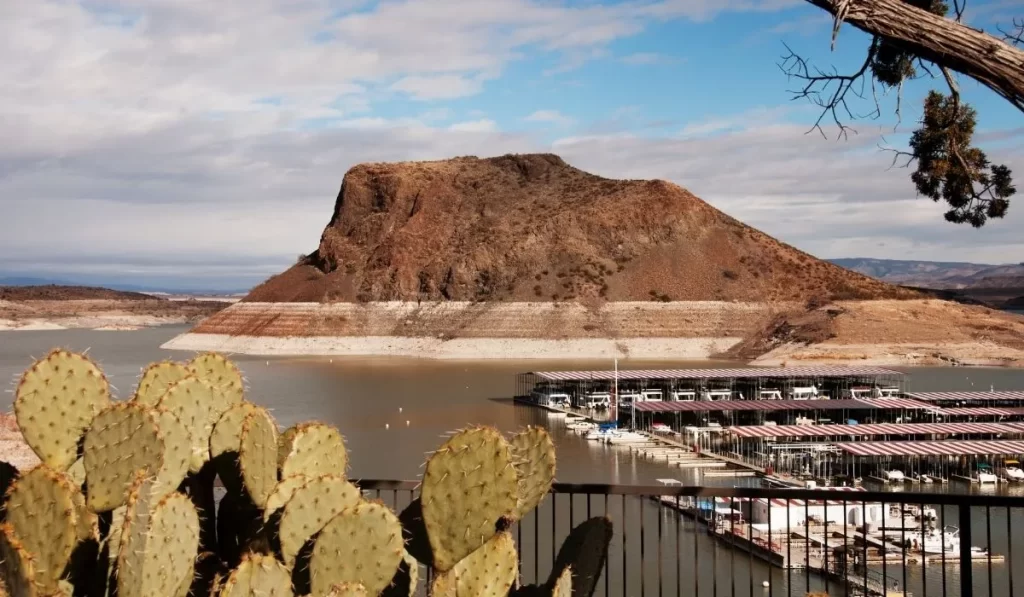
Overview
Elephant Butte Lake State Park, the largest state park in New Mexico, offers a mix of aquatic and desert habitats that attract a variety of bird species.
Key Species
- Western and Clark’s Grebes: Commonly seen on the lake.
- Ospreys: Often spotted fishing in the lake.
- Burrowing Owls: Found in the surrounding desert.
- Shorebirds: Various species of sandpipers and plovers can be observed along the shoreline.
Best Time to Visit
Late spring through early fall is the best time for birding at Elephant Butte, coinciding with the breeding and migratory seasons.
Tips for Birders
- Boat Rentals: Consider renting a boat for closer views of waterfowl and shorebirds.
- Shoreline Walks: Walk along the shoreline for diverse birding opportunities.
- Camping: Stay overnight in one of the park’s campsites for early morning and late evening birding.
6. Valles Caldera National Preserve
Overview
Located in the Jemez Mountains, Valles Caldera National Preserve is a unique birding destination characterized by its vast grasslands, forests, and geothermal features.
Key Species
- Golden Eagles: Frequently seen soaring above the caldera.
- Northern Goshawks: Known to inhabit the forested areas.
- Western Bluebirds: Abundant in the open meadows.
- Red Crossbills: Often found in the coniferous forests.
Best Time to Visit
Spring and summer are the best times to visit, as migratory and breeding birds are most active.
Tips for Birders
- Ranch Headquarters: Start at the ranch headquarters for maps and birding information.
- Hiking Trails: Explore the extensive trail system for access to different habitats.
- Early Visits: Arrive early in the morning for the best birding conditions.
Read More: What Birds Are in San Diego? Birds You Can’t Miss
7. Bitter Lake National Wildlife Refuge
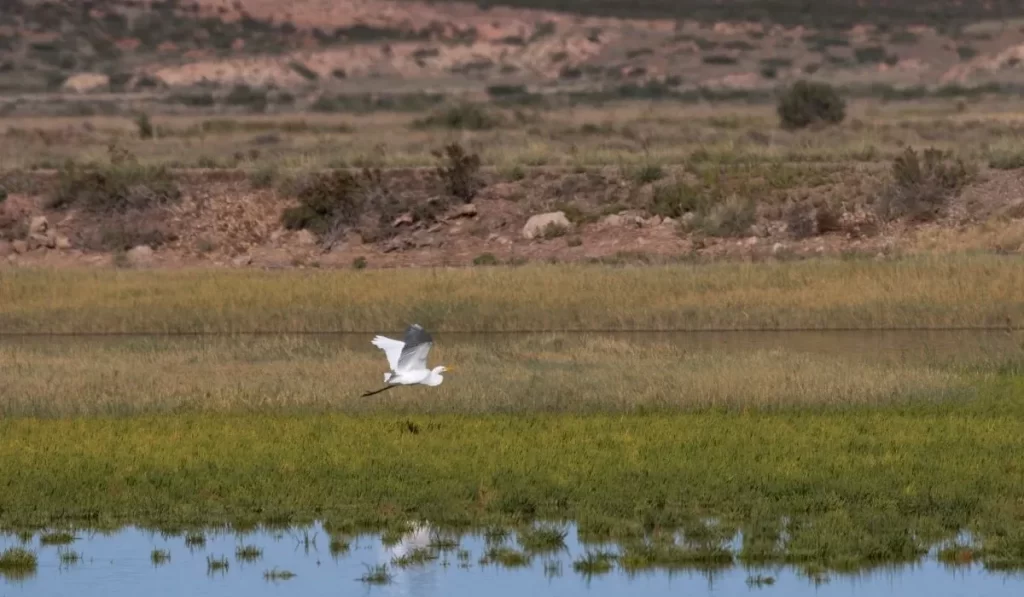
Overview
Located near Roswell, Bitter Lake National Wildlife Refuge is a vital habitat for migratory birds, particularly waterfowl and shorebirds, due to its diverse wetland environments.
Key Species
- Sandhill Cranes: Large numbers can be seen during migration.
- American Avocets: Common in the shallow lakes and ponds.
- Black-necked Stilts: Often seen wading in the wetlands.
- Various Waterfowl: Ducks, geese, and other waterfowl are abundant.
Best Time to Visit
Fall through spring offers the best birding, particularly during the peak migration periods.
Tips for Birders
- Wildlife Drive: Take the auto tour route for easy access to prime birding spots.
- Observation Platforms: Utilize the platforms for unobstructed views of the wetlands.
- Photography: Bring a camera with a telephoto lens for capturing waterfowl and shorebirds.
8. Gila National Forest
Overview
The Gila National Forest, encompassing over 3 million acres, is a birding haven with its varied terrain, including mountains, forests, and rivers.
Key Species
- Mexican Spotted Owls: Inhabit the dense forests and canyons.
- Elegant Trogons: Rare but occasionally seen in the riparian zones.
- Red-faced Warblers: Found in the mixed-conifer forests.
- Zone-tailed Hawks: Often seen soaring above the forested areas.
Best Time to Visit
Spring and summer are ideal for birding, as many species are breeding and more active.
Tips for Birders
- Riparian Areas: Focus on riparian zones for a higher concentration of bird species.
- Camping and Hiking: Take advantage of the numerous camping and hiking opportunities to explore different habitats.
- Local Guides: Consider hiring a local guide for the best chances of seeing rare species.
9. Sevilleta National Wildlife Refuge
Overview
Sevilleta National Wildlife Refuge, located at the confluence of four major biomes, offers a unique birding experience with its diverse habitats, including desert, grassland, woodland, and riparian zones.
Key Species
- Scaled Quail: Common in the desert areas.
- Bell’s Vireos: Often found in the riparian zones.
- Greater Roadrunners: Frequently seen throughout the refuge.
- Varied Raptors: Including Swainson’s Hawks and Ferruginous Hawks.
Best Time to Visit
Spring and fall migrations are the best times to visit, but the refuge supports a wide range of species year-round.
Tips for Birders
- Visitor Center: Begin at the visitor center for maps and recent bird sighting information.
- Scenic Drives: Take the scenic drives for access to different habitats.
- Guided Tours: Join guided tours for expert insights and better birding experiences.
10. Birding Festivals in New Mexico
Overview
New Mexico hosts several birding festivals throughout the year, celebrating its rich avian diversity and providing opportunities for birders to gather, learn, and explore.
Key Festivals
- Festival of the Cranes: Held annually in November at Bosque del Apache, this festival coincides with the peak arrival of Sandhill Cranes and offers workshops, tours, and lectures.
- Audubon’s Birding Academy: This event includes a series of field trips and workshops focused on bird identification and ecology.
- Gila River Festival: Celebrates the wildlife and habitats of the Gila River, with birding as a key component.
Benefits of Attending
- Expert Guidance: Gain insights from experienced birders and ornithologists.
- Community Engagement: Connect with fellow birding enthusiasts and share experiences.
- Educational Opportunities: Participate in workshops and lectures to enhance your birding skills and knowledge.
Tips for Attendees
- Early Registration: Festivals often have limited spots for workshops and tours, so register early.
- Prepare for Weather: New Mexico’s weather can vary significantly, so be prepared for different conditions.
- Bring Necessary Gear: Ensure you have binoculars, a field guide, and appropriate clothing.
FAQs About Birding Hotspots in New Mexico
Are there any birding festivals in New Mexico?
Yes, New Mexico hosts several birding festivals:
- Festival of the Cranes: Held every November at Bosque del Apache, this festival celebrates the arrival of thousands of sandhill cranes and other migratory birds.
- Gila River Festival: While not exclusively a birding festival, it offers birding tours and activities focusing on the diverse avian life in the Gila region.
Can beginners enjoy birding in New Mexico?
Absolutely! New Mexico’s birding hotspots cater to birders of all levels. Many locations have accessible trails and viewing areas, and local birding groups often organize guided walks for beginners.
What types of birds can I expect to see in New Mexico?
- Waterfowl: Ducks, geese, and sandhill cranes.
- Raptors: Bald eagles, hawks, and owls.
- Songbirds: Warblers, sparrows, and grosbeaks.
- Specialty Species: Roadrunner (state bird), elegant trogon, and painted redstart.
When is the best time to go birding in New Mexico?
Spring (March to May): Migratory birds return, and you can see a wide range of species in their breeding plumage.
Final Words
New Mexico’s diverse landscapes and habitats make it a premier destination for birdwatchers. From the wetlands of Bosque del Apache to the alpine heights of Sandia Crest, the state offers unparalleled birding opportunities year-round.
Whether you’re chasing rare species, enjoying the spectacle of migratory flocks, or simply soaking in the natural beauty, New Mexico’s birding hotspots promise a rewarding experience for all levels of birding enthusiasts.
So, pack your binoculars, grab your field guide, and embark on an avian adventure in the Land of Enchantment.
Reference:
https://www.emnrd.nm.gov/spd/activities/wildlife-watching/





